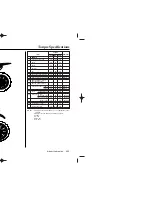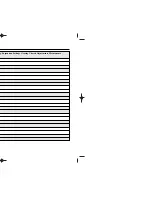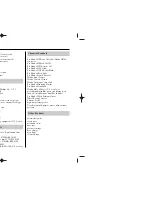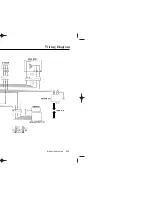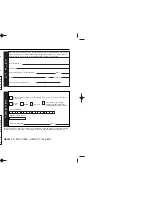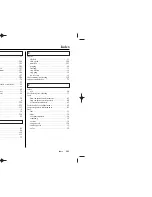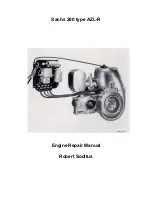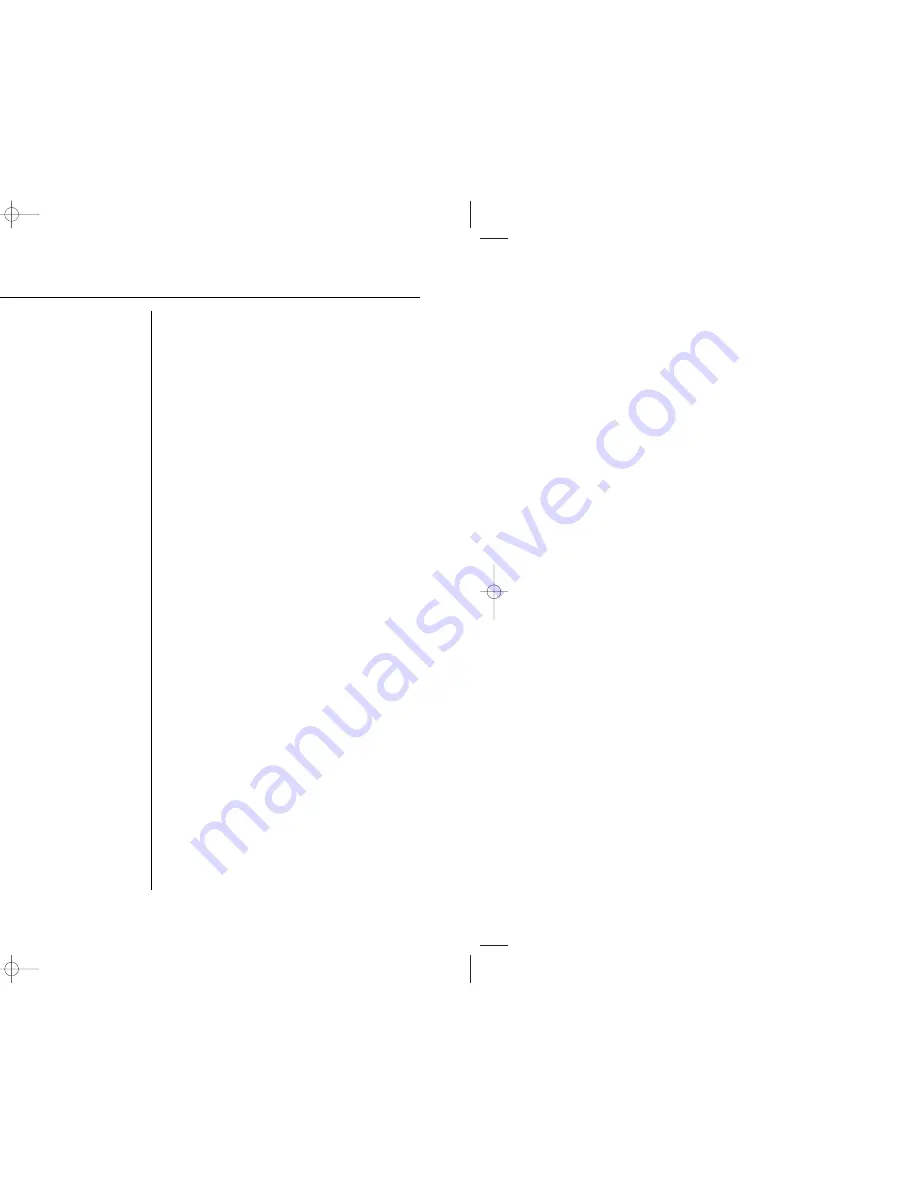
Technical Information
129
Any serious competition effort relies heavily on
the knowledge gained and compiled from
previous racing events. The best way to organize
the many bits of information is to record them in
a logbook.
Your logbook can include such information as
suspension adjustments, carburetor adjustments,
gearing, and tire selection. This detailed
information, along with your comments, can
prove valuable when you compete at the same
track or on similar terrain.
Your logbook can also tell you when
maintenance was performed and when it will be
necessary again. Your logbook also lets you
record any repairs and lets you keep track of the
running time on the engine and suspension
components.
If you choose to sell your CR, the accurate
maintenance records in your logbook might be
the deciding deal-maker for a potential buyer.
Consider using different color pens or pencils to
record important information on specific subjects.
For example, record results in black, jetting
changes in red, suspension/chassis settings in
blue, and gearing selections in green. Color
codes will help you identify the information you
want with a glance.
Tuning & Adjustment Records
Keep track of the settings and adjustments that
worked best at a particular location. These items
include:
• basic track conditions, altitude, and
temperature
• carburetion changes
• suspension settings
• chassis adjustments tested and selected
• gearing
• tire selection
• air pressure
Competition Records
• your placings
• thoughts to improve performance next time:
both yours and your CR’s
• strategy notes
Maintenance Records
• regular interval maintenance
• repairs
• running time on engine
• running time on suspension components
Timekeeping
This Manual lists maintenance intervals for
every-so-many races or every-so-many hours of
running.
Because all races are not the same, the most
effective way to schedule maintenance is by the
hours you have run your CR.
An official “guestimate” is close enough for our
timekeeping purposes. You may choose to record
your time the same way aircraft operators do (but
without the benefit of an electrical hourmeter).
All running time is broken down into hours and
tenths of an hour (each six minutes represents
one tenth of an hour).
Racing Records
Information worth recording for this section of
your logbook may include:
• your placing in each moto and overall
finishing position
• thoughts on what you could do to improve
your performance next time
• notes on any patterns noted in choice of
starting gate positions or in riding portions of
the course as the day progressed that may
prove helpful in future events
• any places on the course where you chose the
wrong line and were passed too easily
• notes on strategy used by your competition or
by riders in another event that are worth
remembering
Maintenance Records
Regular maintenance items you’ll want to record
in your logbook should include:
• dates and results of cylinder, piston and ring
examinations
• patterns for frequency of need for
decarbonization with a particular oil
• when you last performed shock linkage and
swingarm pivot bearing maintenance
• transmission, fork and suspension oil changes
• chain, sprocket, chain guide and slider
replacements
• coolant changes and related component
replacements
• spark plug, brake pad and control cable
replacements
In addition, you should record any irregularities
noted in component wear so you’ll remember to
keep a close eye on these areas in the future.
Competition Logbook
CR250R/121-144(31KSK630) 6/2/06 10:04 AM Page 129
Summary of Contents for CR250R
Page 2: ......
Page 6: ...Motorcycle Safety 1 Motorcycle Safety mation 2 recautions 2 cations 3 4 ...
Page 8: ...Accessories Modifications Motorcycle Safety 3 ...
Page 9: ...replacement ...
Page 10: ...Operating Controls 5 Operating Controls Locations 6 ...
Page 11: ...kickstarter rear brake pedal throttle grip front brake lever ...
Page 12: ...Before Riding 7 Before Riding e 8 ady to Ride 9 9 ...
Page 13: ...RNING met increases the injury or death in a ys wear a helmet eye er protective apparel ...
Page 15: ......
Page 17: ......
Page 19: ......
Page 20: ...Basic Operating Instructions 15 Break in Guidelines ...
Page 21: ......
Page 23: ......
Page 27: ......
Page 36: ...Servicing Your Honda 31 7 and shroud B bolts A bolts collars 9 s e 29 Fuel Tank Removal 9 8 ...
Page 48: ...Servicing Your Honda 43 Throttle ...
Page 69: ......
Page 82: ...Servicing Your Honda 77 6 RC cover bolt olt t Additional Maintenance Procedures 1 3 2 5 ...
Page 85: ......
Page 119: ......
Page 120: ...Tips 115 torcycle 116 117 nt 118 119 Tips 115 Tips ...
Page 123: ...drained fluids is harmful to ...
Page 125: ......
Page 127: ... is stamped on the left 2 ...
Page 132: ...Technical Information 127 High Altitude Carburetor Adjustment ...
Page 135: ...ng Suspension Settings Gearing Chassis Adjustments Maintenance ...
Page 138: ...Technical Information 133 Wiring Diagram ...
Page 139: ......
Page 140: ...Consumer Information 135 136 137 138 ub USA only 139 Consumer Information ...
Page 142: ...Contacting Honda Consumer Information 137 ...
Page 144: ...Consumer Information 139 The Honda Rider s Club USA only ealer for more information on to ...
Page 148: ...Index 143 Index ...











